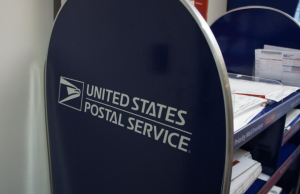Back in 1995, people were transfixed by the O.J. Simpson trial, had more VHS tapes than DVDs, and probably couldn’t point to Iraq on a map. And, direct mail fundraising was supposed be starting a slow death.
A survey of progressive donors by The Mellman Group and A.B. Data Group that year warned that more than 40 percent of the progressive donor base would be dead by 2005, making it “imperative to reach out to young progressives to replenish this critical donors base.” At the time, the average age of a direct mail donor was 65, with just 6 percent younger than 40.
But a new survey of progressive donors finds that direct mail isn’t so much a generational issue as a lifecycle issue. The most recent study found similar percentages within each demographic as in 1995 and the average age for a direct mail donor actually rose to 68.
Mark Mellman, CEO of Washington, D.C.-based The Mellman Group and Charles Pruitt, a partner and co-managing director of A.B. Data Group in Milwaukee and Washington, D.C., presented the findings of both surveys during the recent Fundraising Day New York, sponsored by the New York City Chapter of the Association of Fundraising Professionals.
Rather than dying out, as seemed possible in 1995, the pool of direct mail donors has been replenished, though it continues to age, said Mellman, adding that direct mail seems to be a lifecycle phenomenon, more efficacious with older people.
In 1995, progressive donors were mostly women (63 percent), well educated (26 percent college; 46 percent post-graduate), identified as Democrats (79 percent, 42 percent “strong”), and not at the extreme liberal end of the spectrum (25 percent very liberal; 37 percent “somewhat”).
In 2007, progressives are now more balanced by gender (50 percent), are still well educated (30 percent college; 46 percent post-graduate), but more identify as strong partisans and are increasingly liberal (84 percent Democrat, 54 percent strong; 40 percent “very liberal, 30 percent “somewhat”).
Direct mail and Internet donors are really two very different segments that inhabit two different universes, said Mellman. “If you’re not doing both, you’re leaving money on the table,” he said.
“You have to give people a panoply of options,” Mellman said. However, organizations can’t treat potential multi-channel donors the same way they would treat direct mail donors and mustn’t rely on a single channel. Too often, he said, organizations present themselves in one way online and another way in direct mail. Consistency and discipline in messaging is key.
Online donors are younger (an average age of 52), more educated (52 percent post-graduate) and more liberal than their direct mail counterparts, who also rely on traditional forms of media for their news. Half as many direct mail donors (40 percent) as online donors (82 percent) said they use email several times a day.
To learn about an organization, online donors rely on email (56 percent) and Web sites (25 percent) while direct mail donors rely on offline sources, mainly newspapers and magazines (46 percent) or direct mail (39 percent).
Three quarters of online donors contribute online consistently, and the same goes for mail donors giving consistently offline. Donors also tend to be spontaneous, flexible and reactive in their giving.
Most contributors donate because they were asked in a piece of mail (57 percent) or email (34 percent), but responses to events (13 percent), telephone calls (14 percent) or banner Web ads (3 percent) were much less common. Organizations must always be asking, whether through dedicated Web sites or toll-free numbers, to ease a donor’s path across channels, said Pruitt, suggesting that nonprofits also test everything and test constantly.
Direct mail is a lifestyle issue, not a generational issue, Mellman said, as Baby Boomers still go to their mailbox, open envelopes, and read newspapers. It remains to be seen exactly what type of donor people who were raised with the Internet will become in 10 or 20 years, he said.
Since February 2007, Barack Obama’s presidential campaign has raised $265 million from 1.5 million names, according to Pruitt, whose firm has worked with the campaign.
The best analogy to a presidential race is a tsunami or hurricane because both have moments where the power of the Internet is dramatized, said Pruitt. Within minutes of seeing images on television, people are on the Web and donating, including many new donors. For Obama’s campaign, he said, the seminal moment came in January at the Iowa caucuses.
The remaining major presidential campaigns have gotten this far because they are not focused solely on the Internet, Pruitt said, as evidenced by the Obama campaign’s multi-channel efforts. Former Vermont Gov. Howard Dean had a much more Internet-specific campaign when he gained attention in the 2004 Democratic primary, he said. Obama’s campaign decided it would build an online program that fist asked people to get involved in a movement, Pruitt said, before enlisting a financial commitment. “Money follows commitment,” he said.
The Web has taught nonprofits to be in homes when potential donors are thinking about them, Pruitt said, and when it affects their organizations.
***
This article is from NPT Weekly, a publication of The NonProfit Times.
Subscribe to The NPT Weekly eNewsletter or any of our other enewsletters and get the latest news and ideas related to fundraising delivered to your inbox











